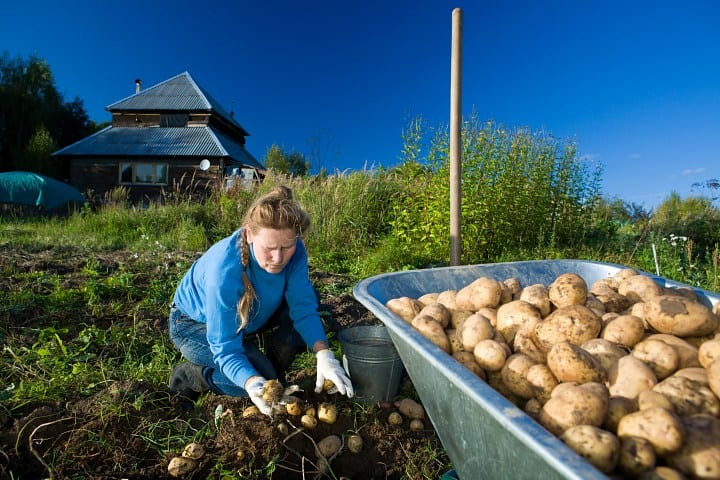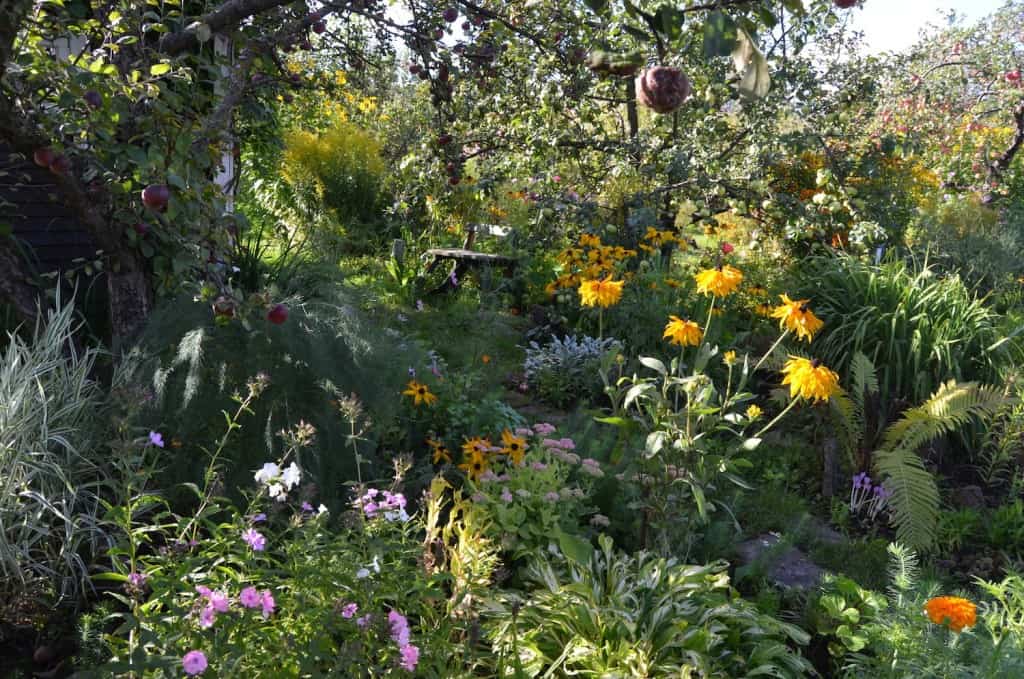
While the majority of citizens in developed nations rely on transported produce and packaged goods to satiate their grumbling stomachs, the people of Russia feed themselves. They have little need for large-scale agriculture, as their agricultural economy is small scale, predominantly organic, and in the capable hands of their nation’s people.
In a thought-provoking article shared by Natural Homes, it was reported that in 2011, 51% of Russia’s food was grown either by dacha communities (40%), or by peasant farmers (11%). The remaining 49% of production was left to large agricultural enterprises.
When one digs deeper into the numbers reported by Russian Statistics Service, however, some very impressive details are discovered. In 2011, dacha gardens produced over 80% of the country’s fruit and berries, over 66% of the vegetables consumed, almost 80% of the potatoes purchased, and nearly 50% of the nation’s milk supply – much of it consumed raw.
These impressive statistics inspire one to ponder why more nations aren’t following suit. Perhaps it is in the Russian peoples’ bloodlines to derive extreme fulfillment from growing their own food (such is a theory happily accepted by the people). One thing is for sure – every nation should be following their lead.
From a young age, many Russian citizens are encouraged to become comfortable digging in the dirt and are taught how to grow plants. It is shared that during the communist period, school children were obliged to visit their local farms to get hands-on experience harvesting food. This was the same time period in which 90% of the nation’s food came directly from dacha gardens. During this same period of time, every child was expected to participate in their family’s cultivation of crops; everyone recognized the importance of being in touch with the Earth and growing nutrient-rich, biodynamic food.

The percentage of food grown by Russia’s dacha has since declined, but a large portion of the country’s food is still obtained from community gardens. It is not uncommon to stroll through the streets of Russia’s cities, such as St. Petersburg, and come across many people selling herbs, berries, fruit, and vegetables from their gardens.
Different from cities in Europe and USA, Russian cities boast a number of small corner shops selling local grown food in all shapes, colors, sizes, and conditions. This is likely because in 2003 the Russian government signed the Private Garden Plot Act into law, which entitled citizens to private plots of land for free. These plots range from 0.89 hectares to 2.75 hectares, and allow the people to contribute to their own food sovereignty.
It might be argued that the ability to control the production, distribution, and quality of foods is now one of the most important freedoms a nation has. With the power of food production in the hands of the people, entitled corporations and market institutions are prevented from dominating the global food system.
Russia is not the only nation to produce such a large amount of its own food. Havana, Cuba reported producing 90% of its city’s produce from local urban farms and gardens.
While the numbers shared are from 2011, no doubt the drive to grow bio-dynamic, organic food is still strong in the Russian people. By sharing this article, you can help enlighten others on the benefits and need of food sovereignty, and inspire them to get involved in their own community garden.
Share your thoughts below.
This article (40% Of Russia’s Food Is Grown From Dacha Gardens) is free and open source. You have permission to republish this article under a Creative Commons license with attribution to the author and TrueActivist.com


